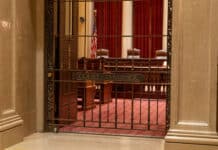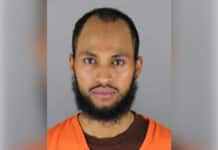Since mayhem erupted following the Memorial Day death of George Floyd — and rioters took to the streets, violating laws and social distancing guidelines — police around the country have been shot, stabbed and attacked with incendiaries, while businesses owned primarily by minorities and immigrants were destroyed via widespread arson and looting.
Politicians and the commentariat, who largely ignore the violent hatred toward law enforcement, say policing in America is broken. Public figures and organizations with tunnel vision say we must defund, abolish or cut ties with police forces because of “institutional racism” or “unconscious bias.” Do they prefer lawlessness, plundering and anarchy? Will they forfeit police protection and the ability to call 9-11? It’s an intellectually lazy and elitist argument supported by unserious, fringe people.
Floyd’s fatal arrest was visually horrifying but, based on my experience working with and interviewing various law enforcement officers across 29 states since 2006, it’s not representative of the 375 million annual contacts police officers have with civilians or our county’s 18,000 police agencies and 800,000 policemen.
The fortnight of protests and chaos are ostensibly about an “epidemic” of police brutality. The problem with this assertion is that it’s disproven by data.
Out of 10 million arrests last year, police killed about 1,000 Americans, only 41 of those unarmed. Of the unarmed fatalities, half were white and less than one-quarter were black. Fewer than 4% involved a white officer and an unarmed black man. Meanwhile nearly 100 cops were killed.
According to the CDC, police killings of blacks declined almost 80% from the 1960s through today. Academics can raise red flags when numbers disagree with their agenda, but the “crisis” of cops killing black suspects doesn’t bear resemblance to reality.
Recent studies also found officers are more reluctant to use deadly force against black suspects than against whites. Of course the more frequently an officer encounters violent suspects from any racial group, the greater chance members of that group will be harmed. But almost 95 percent of civilians shot by officers are attacking police or other citizens, while 90 percent are armed with a weapon. The ivory tower crowd should consider the instant life/death decisions police face when evaluating whether shootings are justified. They may also be surprised to know police are nearly 20 times more likely to be killed by a black person than vice versa.
The Manhattan Institute’s Heather Mac Donald is famous for studying policing and unpopular because the facts she presents (when not being shouted down) debunk myths:
“A solid body of evidence finds no structural bias in the criminal-justice system with regard to arrests, prosecution or sentencing. Crime and suspect behavior, not race, determine most police actions…The persistent belief that we are living through an epidemic of racially-biased police shootings is a creation of selective reporting. The “policing is racist” discourse is poisonous. It exacerbates anti-cop tensions in minority communities — who rely on police for safety — and makes cops unwilling to engage in the proactive policing that can save lives.”
It’s not just Mac Donald; left-leaning groups found similar facts.
A major academic peer-reviewed study recently found white police officers are less likely to shoot black suspects, and research — from a black Harvard professor in the New York Times no less — on shootings over 15 years in our three largest states found no bias existed in lethal force.
Additionally, the Washington Post reported 223 blacks killed in police-involved shootings in 2017; during the same year, we saw nearly 8,000 black victims of homicide. That’s a 35-to-1 ratio of killings between the two tallies.
Undoubtedly the narratives from rogue groups like Black Lives Matter — now inexplicably being lauded and raking in donations from vacuous celebrities and virtue-signaling companies — remain impervious to truths.
My lifelong friend has been a cop for nearly 20 years. He’s mostly concerned with current training decisions.
“Officers are afraid to use force, and this hesitation can get us hurt or killed,” he explains. “Many agencies also spend far more time on bias and de-escalation training than firearms or defensive tactics. Because of this, we must spend our own time and money getting that type of training just to stay safe.”
It’s an election year, so be skeptical of any attention-seeking politician. Joe Biden’s current “justice plan” promises a panacea that after his policing reforms, black parents shouldn’t fear their children walking the streets. Is the threat coming from cops or gang members, who murder urban youth far more often?
Are there bad police? Absolutely. The Obama administration in 2016 asked departments to lower entry standards so more minorities qualified for recruitment — even though many departments already are minority-majority. This risks bad police work and corruption. Minnesota saw these effects three summers ago when the first Somali-American officer was rushed through the system and murdered an innocent woman.
Can there be fixes? People are proposing them, but as Andrew McCarthy and Dennis Prager analyzed last week, there are bigger threats to black communities than policing.
Some think government can provide solutions if you post black squares on social media or encourage vandalizing the nation’s capital. But history shows we should abandon notions that government can solve what ails us. Give your time, money and prayers instead of endangering society and spreading misinformation. Oh, and heed the data.
A.J. Kaufman
A.J. Kaufman is an Alpha News columnist. His work has appeared in the Baltimore Sun, Florida Sun-Sentinel, Indianapolis Star, Israel National News, Orange County Register, St. Cloud Times, Star-Tribune, and across AIM Media Midwest and the Internet. Kaufman previously worked as a school teacher and military historian.


















